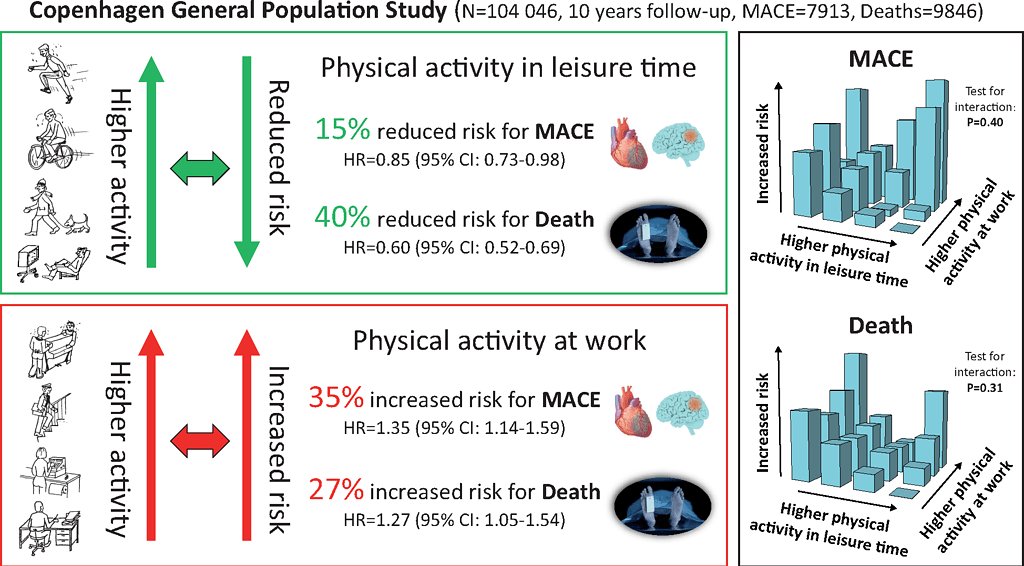By Ahmed El-Medany
The contemporary Copenhagen General Population Study recently published their findings in the European Heart Journal. This large study, which was established in 2003-2014, tested the hypothesis that leisure time physical activity correlated with reduced major adverse cardiovascular events (MACE) and all-cause mortality risk, while occupational physical activity related to increased risks.
Holtermann et al studied 104,046 individuals over a median 10-year follow-up. Higher self-reported leisure time physical activity was found to be associated with reduced MACE and all-cause mortality risk, while higher occupational physical activity was associated with increased risks, independent of each other.

In comparison to low leisure time physical activity, multivariable adjusted (for lifestyle, health, living conditions, and socioeconomic factors) hazard ratios for MACE were 0.86 (0.78–0.96) for moderate, 0.77 (0.69–0.86) for high, and 0.85 (0.73–0.98) for very high activity; corresponding values for higher occupational physical activity were 1.04 (0.95–1.14), 1.15 (1.04–1.28), and 1.35 (1.14–1.59), respectively.
For all-cause mortality, corresponding hazard ratios for higher leisure time physical activity were 0.74 (0.68–0.81), 0.59 (0.54–0.64), and 0.60 (0.52–0.69), and for higher occupational physical activity 1.06 (0.96–1.16), 1.13 (1.01–1.27), and 1.27 (1.05–1.54), respectively.
Read more at: https://academic.oup.com/eurheartj/advance-article/doi/10.1093/eurheartj/ehab087/6213772
Source: Holtermann A, Schnohr P, Nordestgaard BG, Marott JL. The physical activity paradox in cardiovascular disease and all-cause mortality: the contemporary Copenhagen General Population Study with 104 046 adults. European Heart Journal. 2021 Apr 8.

